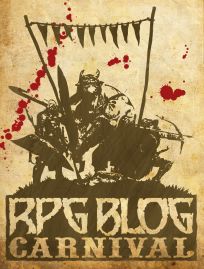Cyberpunk 2020.
I encountered the first edition of Cyberpunk at my local Games Workshop in Hammersmith back in the day when Games Workshop sold more than just their own products.
I was intrigued by the line-art on the box and the blurb on the back really gripped me as I had seen no other game where you could play someone who could hack into satellites to play music they liked.
While I liked the system, it did seem to be a little unbalanced in places especially in the way it handled combat as the combat system Friday Night Firefight had rifles that do enough bullet damage to vaporise an un-armoured person.
So I put the game aside after running it a couple of times and thought no more of it.
It was a few years later that I purchased the second edition titled 2020 and it is this edition that I used to run several campaigns with.
I was surprised to find that very little had changed from the original version, some things were simplified and the combat system had been given an overhaul. Best of all my favourite part of the game remained intact: The lifepath.
I have mentioned before how I like systems that give you a background for the character and this not only did that but it would also give you plot hooks galore as well as allies, lovers, friends and enemies. Fitting in with the dystopian hedonism that certain cyberpunk books had the lifepath could as a result of a few dice rolls dictate that your character could be straight, bi or homosexual. Of course I never made a player accept any result that made them feel uncomfortable with. The lifepath was such fun I had one player try to make his character as old as possible so that they could play this mini game for as long as they could.
The game was also resplendent with chrome and had all sorts of stuff that a player could desire; whereas some games publish veritable arms catalogues as supplements, the four Chromebooks are a futuristic lifestyle magazine the products within are presented as fake advertisements. It looks like the design team took some cues from the film Robocop and the Chromebooks added a much needed touch of polish and some great 21st century ideas for household living.
Cyberwear was a big part of the game and you could implant all sorts of gadgets into your body. Cyerbarms and legs were par for the course and owing to the lessened lethality of the combat system which meant you no longer turned into red mist you could instead find your arm or leg being destroyed.
Honourable mention.
Shadowrun.
I think I picked Shadowrun 1st edition up after Cyberpunk as I was drawn to the evocative cover painting on the hardback and I although found the system a bit wonky in places it was good fun to play.
It was touted as fusion of cyberpunk and fantasy, it had the classic fantasy races; humans, orcs, elves and dwarves. The lack of an integrated lifepath system also irked me but the archetypes made up for it.
This was one of the first games I encountered to use an archetype based character creation system and the archetypes where just that a standard character you could pick up and with a small amount of customisation play.
There was also a full blown character creation system but that to me is where the system started to break down; a lack of guidance on how to handle to priority system led to some incorrect characters which were naturally more powerful than the archetypes by several orders of magnitude.
Second edition tried to simplify the system which it did but the creep of the splatbooks didn’t help either as it appeared to me that each book was trying to outdo the previous ones. By the time the bioware book came out things were tottering on the edge of collapse. This one volume gave your character several implants that could function with cyberwear and having this book at character creation you could turn out some very potent characters.
My personal favorite was Rockwell the troll who was the very epitome of a meta-human tank. I sank all I the attribute points and cybernetic enhancements I could into his Body stat which ended up at a mind boggling 17! He once endured three rounds of hand to hand combat with a dragon and got away with nothing more than a moderate wound; it was at that point the GM cheated and decided that the dragon would use magic against him, something that Rockwell couldn’t cope with and he dropped like a stone after one mana bolt later.
Wonky rules aside, Shadowrun did have a meta-plot which runs through the supplements and the comments in the sidebars and footers of the books are very witty and add to the feel of the expanded universe.
I’ve discussed two books which rode the coattails of the popularity of the cyberpunk genre, Cyberpunk 2020 for me is best when it comes to Style but Shadowrun has the edge when it comes to substance.

